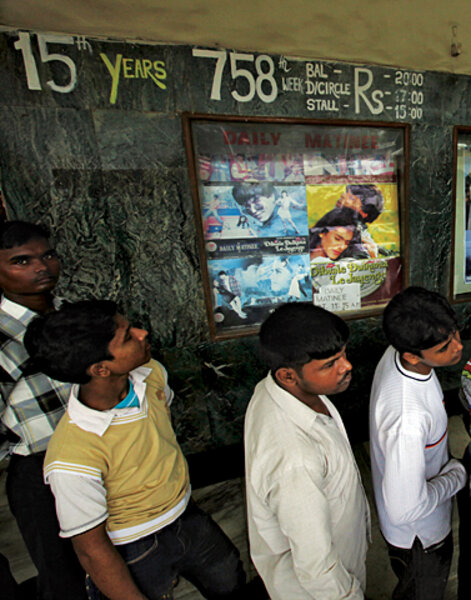How foreign movie heroes differ from Hollywood's
Loading...
| Los Angeles
A big reason we love movies is because we love heroes. For most of the world's moviegoers these days, at least those within the reach of Hollywood – which means, for better and for worse, just about everybody – heroism is scaled big and action-oriented, often in 3-D. You can be a darkly brooding Batman, Iron Man, or Spider-Man, you can be an avatar – you can, in other words, be an anti-heroic hero. But the template remains the same: comic-book-driven and larger than life.
The film industries of Europe and Asia cannot compete with Hollywood's hegemony, so they don't even try. By default, Hollywood has dominated the realm of megacostly, special-effects-laden fantasias. Its 3-D extravaganzas are intended at least as much for the overseas market as for the domestic market.
How you portray heroism is often a function of movie-making economics. Rather than trying to beat Hollywood at its own game, film-makers outside America are more likely to favor moral heroism over physical heroism – for one thing, it's less expensive to produce. Colin Firth's stammering George VI in "The King's Speech" embodies courage against fearful odds and you don't have to wear 3-D glasses to enjoy his triumph.
It's always useful to be reminded that there's more to movies than Hollywood. The parochialism of my assumptions about movie heroism became glaringly obvious to me several years ago when I spent two weeks in Kolkata (Calcutta), India, as part of a government-sponsored cultural-outreach program, during which I lectured to college students about the films of the late, great director Satyajit Ray.
It was my first time in India, which also happens to have the world's largest film industry. Bollywood movies – certainly not the lyrical, home-grown dramas of Ray's realm – account for the overwhelming bulk of that country's film fare. I had always believed that India's vast poverty and illiteracy explained the success of the frankly escapist Bollywood movies, with their sudsy plots and deliriously spangly musical numbers. (I coined the term "Busby Beserkeley" to describe Bollywood musicals, and the phrase stuck.)
Imagine my surprise when I discovered, in speaking with the Kolkata college students, most of whom were highly educated and relatively well-to-do, that they, no less than the uneducated poor, were obsessed with Bollywood stars. All of Kolkata was obsessed with Bollywood. Posters of the latest Bollywood hits were bannered everywhere; the markets and shops were piled high with fanzines; the retail outlets and street vendors overflowed with DVDs. Shopkeepers and hotel workers would giddily reel off the plots of movies to me.
Bollywood stars, because they reign not only in India but throughout much of Asia, are, per capita, the biggest movie stars in the world. Brad Pitt is no match for Salman Khan. The dashing heroes and glamorous heroines of Bollywood may owe something to Hollywood, especially chaste Old Hollywood, but I think they owe much more to a far older tradition. The Bollywood movie stars are idols in a kind of ongoing pop-culture "Mahabharata."
To watch a Bollywood movie in India, with an audience made up not only of college kids but of street urchins, loners, the natty and the shabby, and large, noisy multigenerational families, is to enter into a realm where movie stars are not merely admired, they are, literally, worshiped.
Hollywood stars still have the broadest global appeal, but, as the world economic landscape changes and American absolutism falters, the nature of that appeal may change.
Subverbal, highly exportable action stars such as Arnold Schwarzenegger and Sylvester Stallone are mostly part of Hollywood's past, and they have not been replaced by younger counterparts.
Since the Hollywood movies that often sell best overseas are also the most cartoonish, does this mean that, in order to justify their salaries, stars like George Clooney, Johnny Depp, Tom Hanks, and Leonardo DiCaprio are going to have to muscle up and dumb down? Or does the potentially dwindling supply of globally popular hero-actors mean that a new species of star – perhaps with greater multicultural cred than the current Hollywood crop of white Western males – will arise to fill the vacuum?
Or will we be worshiping digital holograms instead? The movie heroes of tomorrow could well be the ones who look the best on your iPhone.





